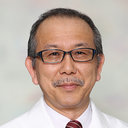Primary pineal rhabdomyosarcoma successfully treated by high-dose chemotherapy followed by autologous peripheral blood stem cell transplantation: case report.
Schlüsselwörter
Abstrakt
Primary intracranial rhabdomyosarcoma is quite rare, and its prognosis is poor compared with that for rhabdomyosarcoma in other organs. The authors present a case of pineal rhabdomyosarcoma successfully managed with multimodal therapy including surgery, chemotherapy, radiation, and high-dose chemotherapy (HDC) followed by autologous peripheral blood stem cell transplantation (HDC/APBSCT). An 8-year-old girl presenting with headache and nausea was referred to the authors' institution. Computed tomography and MRI revealed a pineal tumor associated with obstructive hydrocephalus. Subsequently, an emergent endoscopic tumor biopsy and third ventriculostomy were performed. The patient's symptoms immediately improved. The most likely pathological diagnosis was embryonal rhabdomyosarcoma. Chemotherapy with etoposide, cyclophosphamide, cisplatin, pirarubicin, ifosfamide, actinomycin D, and vincristine was followed by a second-look operation and whole-brain and craniospinal radiation. Because the intraoperative findings and pathological examination of the second operation suggested a definitive diagnosis of rhabdomyosarcoma and the presence of viable residual tumor cells, HDC with etoposide and melphalan was followed by APBSCT. The patient was discharged from the hospital without residual tumor or any neurological deficit. No recurrence was observed at 30 months. This is the first case of primary pineal rhabdomyosarcoma treated with HDC/APBSCT. Although the efficacy of HDC/APBSCT for rhabdomyosarcoma has not been established, the prognosis of primary intracranial rhabdomyosarcoma treated with conventional treatment is quite poor. High-dose chemotherapy followed by APBSCT may contribute to a better prognosis for primary intracranial rhabdomyosarcoma.





